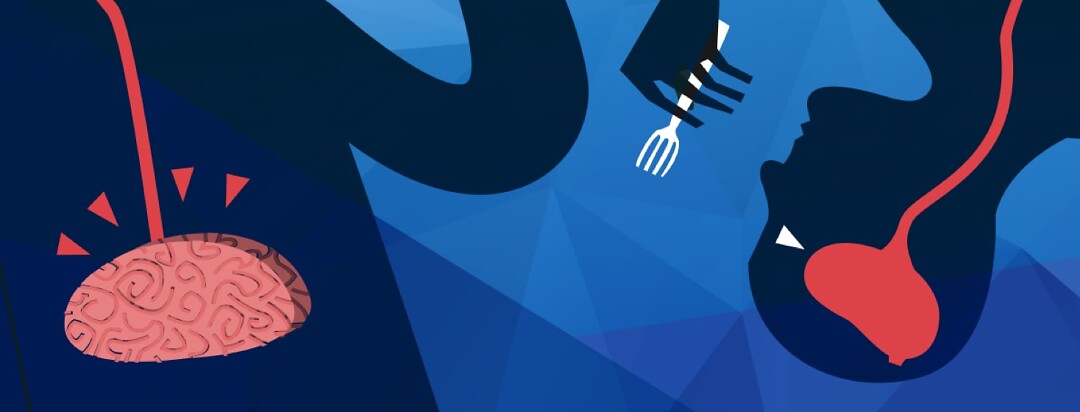Healthy Eating: It’s All in Your Head
One of the biggest reasons we turn to not-so-healthy foods is simple: Habit.
Maybe when you were a kid your mom gave you a giant bowl of buttered noodles to make you feel better after a rough day at school. And then after a ball game, your whole team ate make-your-own-sundaes and pizza to celebrate. And perhaps in college, you spent late nights studying and ordered greasy takeout to keep yourself motivated and alert. For you, food might equal comfort, celebration, or distraction.
What is a habit loop?
Habits aren’t easy to break, but in many ways, they’re all in your head. And your head is the way to overcome those habits, too.
A habit is simply a loop. There’s a trigger, a response, and a reward. For instance, hearing bad news at work could be the trigger, eating a family size bag of cookies or chips is the response (stress eating), and the reward is a momentary escape from the sadness or anger you were feeling, not to mention the food tastes good, which is a reward in and of itself.
Clearly, this “reward” also has not-so-great consequences, including the emotional response of you feeling guilty about overdoing it, and perhaps berating yourself or putting yourself down for being weak or out of control. And you know what bad feelings can be? Another trigger in the habit loop, which may cause you to turn to even more bad habits.
How do you stop the loop and create healthy eating habits?
You can see how this loop can go on and on, self-perpetuating through time and space. The question of course is, how do you break bad habits?
Awareness
The first thing to do is to be aware of these loops in your life. Is the trigger a Friday night, and you want to reward yourself for getting through the week? Is it that you’ve gotten into a fight with a loved one or recently looked at your bank balance and are feeling sad or worried? You can’t change a habit loop if you’re not aware of it, so that’s the first order of business. I suggest dedicating a notebook or special area in your smartphone for just this activity; writing it down makes your personal patterns much more obvious.
Once you’ve become aware of what’s causing any eating habits you’d like to change (aka your trigger), now you’re ready to take the next step: consciously choosing a different response.
Choose a different response
Here’s the thing about habits: You can’t just stop having a response to triggers, no sweat. Instead, you have to replace your response with a new one, preferably one that makes you feel good.
In this case, it might help to make a list, either in your head or on paper (or digitally), of what possible responses you could try instead. Drink a cup of tea, go for a walk, watch a funny cat video, text a friend, whatever you think might work.
Next time you’re triggered, pull out your list. Habits continue because they’re automatic, but you’ve already started undoing that automation by becoming aware of it. Try something on your list. See if a text conversation with your bestie helps better than the chocolate bar did.
And if you fell into your old patterns, even after becoming aware of your habit loop? It's okay and it's bound to happen sometimes. Write your response down, and also write down if it actually helped you feel better about whatever it was you were upset about. If you keep turning to food and seeing over and over that it doesn’t help you, you’re that much more likely to try one of your other responses instead.
Remember: Habits are all in your head. They’re automatic behaviors that you can, indeed, change, but first, you have to notice they’re happening, then come up with new behaviors. You can do it!

Join the conversation